Whether you’re looking to give your shed a much-needed facelift or just want to improve its curb appeal, installing vinyl siding is an easy and cost-effective way to do it. Vinyl siding is one of the most popular materials for home exteriors due to its durability, weatherproof properties and attractive look. Plus, it’s easy to install and can add a touch of personality to any outdoor structure. In this article, we’ll take you step by step through the process of installing vinyl siding on a shed so that you can transform your outdoor space into something truly special.
Disclaimer: The information provided in this article is for informational purposes only and should not be used as a substitute for professional advice. For specific advice on your project, we recommend consulting with the experts at Advance Roofing LLC. They have been proudly serving the Spokane, WA area with superior roofing solutions for many years. With their expertise and quality craftsmanship, you can trust that your project will be completed to the highest standard possible.
What is a shed?
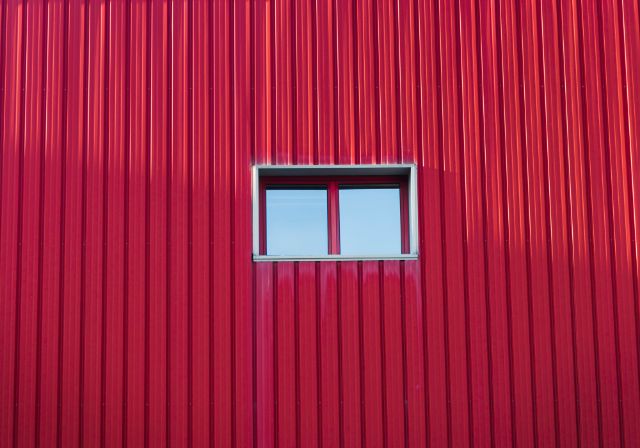
A shed is an outdoor structure that is usually located in a backyard or garden area. It is typically a small, simple building that provides additional storage space and serves as a workspace for gardening or other hobby activities. The most common use of a shed is to store outdoor tools and equipment, such as lawn mowers, shovels, and gardening supplies. However, sheds can also be used for other purposes such as a workshop, playhouse, or even a small office.
Sheds come in a variety of sizes and styles to match the specific needs of the user. Many sheds are made from wood or vinyl siding and have a pitched roof with shingles or metal roofing material. There are also sheds made from metal, plastic, or even fabric.
Most sheds are installed on a foundation, consisting of a level surface of gravel or concrete blocks. It is important to properly level the ground before installing a shed to ensure that it is structurally sound. Some sheds may require additional bracing or support to meet building codes and ensure structural integrity.
When choosing a shed, it is important to consider the climate and weather conditions in your area. For example, sheds located in colder climates may require additional insulation or materials to withstand harsh weather conditions.
Overall, a shed is a practical and useful addition to any backyard or garden space. It provides additional storage and workspace, while also adding curb appeal and value to your property.
Why Vinyl Siding?
When it comes to choosing the right material for your shed’s siding, there are a multitude of options available. From wood to aluminum to plastic, it can be difficult to determine which material is the best fit for your needs. However, one option that has gained significant popularity in recent years is vinyl siding.
One of the main reasons that vinyl siding is such a popular choice among homeowners is its curb appeal. Vinyl siding comes in a variety of colors and styles, allowing for customization that can suit any design aesthetic. Additionally, vinyl siding is resistant to warping, cracking, and fading, ensuring that your shed looks pristine for years to come.
Another benefit of vinyl siding is its durability. Vinyl is composed of strong, flexible PVC (polyvinyl chloride), which is able to withstand extreme weather conditions. In colder climates, vinyl siding can resist cracking and breakage from freezing temperatures, while in hotter climates, vinyl siding is able to resist heat warping and fading. Additionally, vinyl siding is resistant to insect damage and rot, making it a low-maintenance option for your shed.
Installation and maintenance of vinyl siding is also relatively straightforward. Vinyl is a lightweight material, making it easier to install than heavier options like wood or brick. Additionally, vinyl siding does not require painting or staining, eliminating ongoing maintenance costs.
One common concern with vinyl siding is its impact on the environment. However, many vinyl manufacturers are now producing eco-friendly options, including vinyl siding made from recycled materials or that use fewer resources during the manufacturing process. These options provide the same durability and curb appeal as traditional vinyl siding, while also reducing waste and environmental impact.
Overall, vinyl siding is a great option for those looking to enhance the curb appeal and durability of their shed. With a range of colors and styles, easy installation and maintenance, and resistance to weather and insect damage, vinyl siding is a cost effective choice for any shed owner.
Benefits of Installing Vinyl Siding on a Shed
Vinyl siding is an excellent choice for homeowners who want to add curb appeal and durability to their shed. There are numerous benefits of installing vinyl siding on a shed, some of which include:
- First, vinyl siding is incredibly resilient and able to withstand even the harshest of weather conditions. Vinyl’s durability makes it an ideal material for sheds located in regions with extreme weather conditions, including areas with hot summers, freezing winters, or strong winds. In addition, vinyl is resistant to insect damage and rot, so it’s an excellent choice for sheds that are located in humid or damp areas.
- Vinyl siding is available in a wide range of styles and colors, so you can completely customize the look of your shed. Because vinyl siding is so versatile, it’s easy to find a style that complements the design of your home and other outdoor features. In addition, vinyl’s many design options make it easy for homeowners to create a cohesive look for their outdoor space.
- Installation of vinyl siding is relatively easy and straightforward. Vinyl siding is lightweight and can be installed quickly and easily by professional contractors. This means that homeowners can have their vinyl siding installed quickly and efficiently, at a fraction of the cost of other materials like wood or brick.
- Vinyl siding is also a low-maintenance option for sheds. Unlike other materials that require regular painting or staining, vinyl siding requires minimal upkeep and is easy to clean. This means that homeowners can spend more time enjoying their outdoor spaces and less time worrying about ongoing maintenance.
- Finally, vinyl siding is an eco-friendly option for sheds. Many vinyl manufacturers now produce eco-friendly vinyl options, including siding made from recycled materials or that use fewer resources during the manufacturing process. These eco-friendly options provide all the same benefits as traditional vinyl siding, while also reducing waste and environmental impact.
Overall, there are many compelling reasons to consider installing vinyl siding on your shed. From its durability in extreme weather conditions to its versatility in design to its low-maintenance requirements, vinyl siding is an excellent choice for homeowners looking to add beauty and functionality to their outdoor spaces.
Types of Vinyl Siding
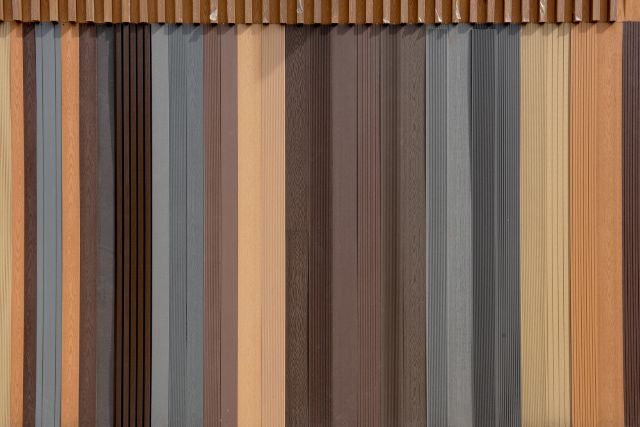
When it comes to enhancing the curb appeal and durability of your shed, vinyl siding is often the go-to option for homeowners. Not only is it versatile in design, but it’s also long lasting and low-maintenance.
However, not all vinyl siding is created equal. There are various types of vinyl siding available on the market, each with unique features and benefits. Here are some of the most popular types of vinyl siding available today:
- Horizontal Vinyl Siding: This is the most common type of vinyl siding. It’s installed horizontally and comes in a variety of styles, including clapboard, dutch lap, and beaded.
- Vertical Vinyl Siding: As the name suggests, this type of siding is installed vertically. It’s an ideal option for sheds with a rustic or modern design.
- Insulated Vinyl Siding: This type of vinyl siding includes an insulation layer that helps regulate temperature and reduces energy costs. It’s perfect for sheds located in climates with extreme hot or cold temperatures.
- Shake Vinyl Siding: If you’re looking to add a touch of charm to your shed, shake vinyl siding is an excellent option. It’s designed to mimic the appearance of natural cedar shake, but without the high price tag.
- Board and Batten Vinyl Siding: Board and batten siding features wide vertical boards with thin strips running vertically between them, giving it a unique look that complements traditional and modern shed designs alike.
- Shiplap Vinyl Siding: Inspired by the boards used to create old boats, shiplap vinyl siding has grooves that fit together tightly for a seamless look. It’s a popular option for sheds with a farmhouse aesthetic.
In conclusion, vinyl siding is a versatile and long-lasting option for enhancing the curb appeal and durability of your shed. With a variety of styles and types to choose from, you’re sure to find the perfect fit for your shed design and aesthetic.
Aluminum Siding
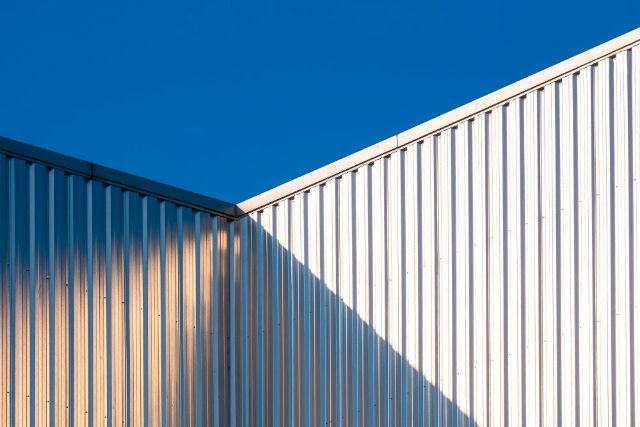
Aluminum siding is a popular choice for homeowners looking for a durable and low maintenance option. Unlike vinyl siding, which is a type of plastic, aluminum siding is made of metal. It’s known for its strength, weather resistance, and ability to hold up against extreme weather conditions.
One of the benefits of aluminum siding is its durability. It’s resistant to warping, fading, and cracking, which means it can last for decades with proper maintenance. It’s also impervious to pests, such as termites, which can wreak havoc on wood siding. And unlike vinyl siding, which can melt or warp in high temperatures, aluminum siding can hold up against even the hottest of climates.
Another benefit of aluminum siding is its versatility in design and color options. It can be made in a variety of styles, including horizontal, vertical, and sheet metal. It can also be painted or coated with a variety of finishes, such as wood grain or metallic. This allows homeowners to choose a siding option that complements their home’s design aesthetic and enhances its curb appeal.
When it comes to installation, aluminum siding requires a solid and flat wall surface for it to be properly mounted. This is because it’s a rigid material that needs a stable backing to support it. It can be installed on various types of wall surfaces, including wood and masonry.
However, there are some drawbacks to consider with aluminum siding. One is that it can dent or scratch easily, which can be unsightly if not properly repaired. Additionally, it’s a more expensive option compared to other types of siding, such as vinyl or wood.
Overall, aluminum siding is a reliable and long-lasting option for homeowners who want a sturdy and low-maintenance siding alternative. Its resistance to harsh weather conditions and pests, along with its design versatility, makes it a popular choice for homeowners around the world.
Vertical Siding

Vertical siding is a popular choice for homeowners looking to add a modern touch to their home’s exterior. This style of siding runs up and down the length of the house, as opposed to the more traditional horizontal siding which runs side to side.
One of the benefits of vertical siding is its ability to make a home look taller. This style can create a visual appeal that makes the house appear more grand and impressive. Another advantage is the ability to draw the eye upward, highlighting the height of the home. This is especially ideal for homes with high ceilings or multi-story structures.
Vertical siding comes in a variety of materials, including vinyl, wood, and fiber cement. These materials offer different advantages depending on the homeowner’s needs and preferences. Vinyl is a popular choice due to its low maintenance and affordability, while wood offers a natural look that can add warmth to the home’s exterior. Fiber cement is a durable option that can withstand harsh weather conditions and is fire-resistant.
One downside of vertical siding is the potential for water damage. Because the siding is installed vertically, water can seep into the seams between panels and cause damage over time if not properly installed and maintained. Additionally, some homeowners may find the cost of vertical siding to be higher than other styles of siding.
When properly installed and maintained, vertical siding can elevate the aesthetic of a home’s exterior and increase its curb appeal. It’s important to weigh the pros and cons and consider the best material for your needs and budget before making a decision.
LP SmartSide Trim & Siding
If you’re looking for a durable and stylish option for your home’s exterior, LP SmartSide Trim & Siding may be the perfect choice. This siding is made from an innovative engineered wood product that combines the beauty of natural wood with the strength and durability of modern technology.
One of the standout features of LP SmartSide Trim & Siding is its resistance to the elements. It can withstand extreme temperatures and harsh weather conditions, making it a great choice for homes located in areas with hot summers, cold winters, or frequent storms. Additionally, LP SmartSide Trim & Siding has been treated with zinc borate, which helps protect against fungal decay and insect damage.
Another advantage of LP SmartSide Trim & Siding is its versatility. It comes in a range of styles and textures, from traditional lap siding to modern vertical panels. You can also choose from several colors and finishes to create a unique and personalized look for your home. And because LP SmartSide Trim & Siding is available in a range of sizes and patterns, it can be used to accentuate architectural features or create a custom look.
Installation of LP SmartSide Trim & Siding is relatively easy and straightforward, and it can be installed using basic tools and techniques. It is compatible with a range of common building materials, including brick, stone, and stucco, which makes it a great choice for renovation projects or new construction.
One final benefit of LP SmartSide Trim & Siding is its cost effectiveness. While it may be slightly more expensive than some other siding options, it is still relatively affordable and offers a great value for homeowners looking for a long-lasting and attractive option for their home’s exterior.
Overall, if you’re looking for a durable, stylish, and versatile option for your home’s exterior, LP SmartSide Trim & Siding is a great choice. With its resistance to the elements, range of styles and textures, easy installation, and cost effectiveness, it’s no wonder that this siding is becoming a popular choice among homeowners.
Wood Siding
Wood siding has been a popular choice for homes for centuries. Its natural beauty and rustic charm make it a timeless classic that adds warmth and character to any home. But beyond its aesthetic appeal, wood siding also offers a range of benefits that make it a practical choice for homeowners.
One of the advantages of wood siding is its versatility. It comes in a variety of styles, from classic clapboard to the more rustic board-and-batten siding, and can be customized with a range of finishes and stains to create a unique look for your home. It also offers a range of textures, from smooth to rough-hewn, which can be used to accentuate architectural details or create a specific design aesthetic.
Another benefit of wood siding is its durability. While it may require a bit more maintenance than some other siding options, such as vinyl or aluminum, wood siding can last for decades with proper care. Regular cleaning and staining can help protect against rot and decay, and proper installation can help ensure its structural integrity even in harsh weather conditions.
Wood siding also offers a range of environmental benefits. It is a renewable resource that is biodegradable and recyclable, which makes it a more sustainable choice than some synthetic siding options. Additionally, wood siding acts as a natural insulator, helping to keep your home warm in the winter and cool in the summer, which can help reduce your energy consumption and lower your utility bills.
Of course, wood siding does have its drawbacks. It can be more susceptible to insect damage and rot than some other siding options, and may require more frequent maintenance to keep it looking its best. Additionally, some building codes and zoning laws may require additional requirements or inspections when installing wood siding.
Overall, wood siding is a beautiful and practical choice for homeowners looking for a classic and timeless option for their home’s exterior. With proper care and maintenance, it can offer a long-lasting and sustainable solution that adds value and curb appeal to your home.
Batten Style Siding
If you’re looking for a classic and timeless siding option, batten style siding may be the perfect choice for your home. Batten siding consists of wide boards with narrow strips, or battens, covering the seams between them.
One of the benefits of batten style siding is its durability. The battens help to reinforce the boards, making it more resistant to damage from wind, rain, and other harsh weather conditions. Additionally, the wide boards can be made from a variety of materials, including wood, vinyl, and fiber cement, which offer different levels of durability and maintenance requirements.
Another benefit of batten siding is its versatility. It can be customized with different widths and spacing of battens to create different looks and styles, from traditional to more modern. It also comes in a variety of textures and finishes, including smooth, rough hewn, and rustic, which can be used to accentuate architectural details or create a specific design aesthetic.
One thing to keep in mind when considering batten siding is its installation process. Because of the battens, the siding can sometimes be more difficult to install than other types of siding. It may also require additional bracing and support to ensure its structural integrity.
Overall, batten style siding is a common siding choice for those who want a classic look with added durability. With its customizable options and variety of materials, it can be an attractive and practical choice for any home.
Plastic Siding
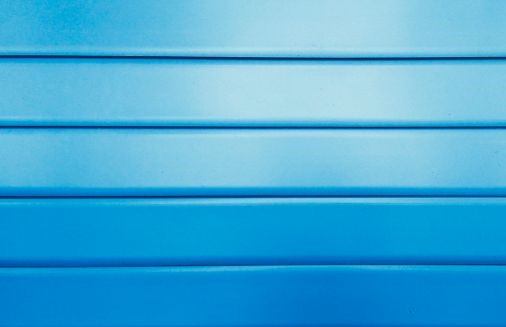
If you’re considering installing new siding on your home, you may be overwhelmed by the variety of options available. One option that has gained popularity in recent years is plastic siding.
Plastic siding, also known as vinyl siding, offers a number of benefits that make it an appealing choice for many homeowners. For one, it is a relatively low-maintenance option. Unlike wood siding, which can rot or warp over time, plastic siding is designed to resist harsh weather conditions and maintain its appearance over the long term with minimal upkeep.
Another benefit of plastic siding is its affordability. While there are certainly more expensive options on the market, plastic siding is generally considered one of the cheapest options available. This makes it an accessible choice for homeowners on a budget, or those who are looking to make an affordable upgrade to their home’s exterior.
In addition to being affordable and low-maintenance, plastic siding also comes in a variety of colors and styles. Whether you’re looking for a classic, traditional look or something more modern and sleek, you’re sure to find an option that suits your taste.
Of course, plastic siding isn’t without its drawbacks. For one, it may not be suitable for all geographic locations or climates. If you live in an area that experiences extreme temperatures, for example, you may want to consider a more durable option like aluminum siding.
Overall, plastic siding is a versatile and affordable choice that can add curb appeal and value to your home. With the right installation and maintenance, it can last for years to come and provide a beautiful, weather-resistant finish to your home’s exterior.
Durable Options for Cold Climates
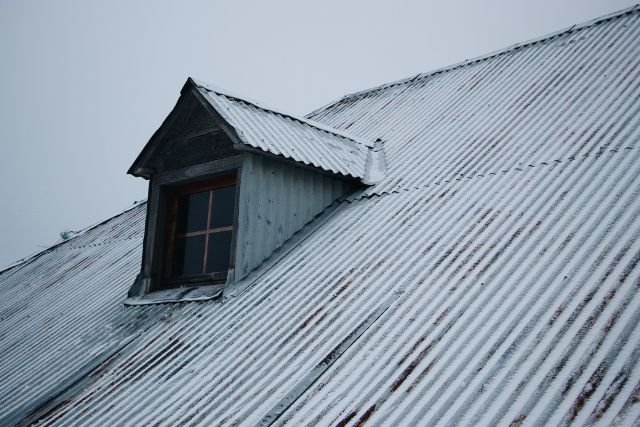
If you live in an area that experiences cold temperatures, you know how important it is to choose durable siding options. Extreme weather conditions can cause damage to your home’s exterior and compromise its structural integrity, making it essential to choose the right siding material for the job.
When it comes to cold climates, cellulose fibers and zinc borate are two materials that are often recommended for their durability. Both of these materials are resistant to damage from extreme temperatures and moisture, making them ideal for areas with harsh weather conditions.
Another option for cold climates is LP SmartSide, a type of engineered wood siding that is designed to withstand a variety of weather conditions. LP SmartSide is available in a variety of styles, including bevel siding, batten style siding, and board-and-batten siding.
The material is treated with a zinc borate solution, which helps to protect it from damage caused by insects and rot.
For those looking for a more traditional option, wood siding can also be a durable choice. Batten siding, which is comprised of board-and-battens, offers excellent insulation properties and can withstand harsh weather conditions. T1-11 plywood siding is another type of wood siding that offers both durability and aesthetic appeal.
When choosing siding for cold climates, it is important to consider additional requirements, such as building codes and weather-related regulations. Some areas may require a braced wall to help ensure the structural integrity of the wall surface, while others may require additional levels of foundation and wall preparation, such as clean stone, river stone, or stone dust.
Finally, when considering the installation costs of siding in a cold climate, it is important to factor in the cost of labor and materials. Laser levels and other specialized tools may be required to ensure that the siding is installed correctly and at the appropriate level. Ultimately, investing in a durable siding option can save homeowners from costly repairs down the road and keep their home looking great for years to come.
Zinc Borate to Improve Structural Integrity in Cold Temperatures
When it comes to cold temperatures, maintaining the structural integrity of a building is essential. And one way to do that is by using materials that are resistant to damage caused by extreme weather conditions. This is where zinc borate comes in.
Zinc borate is a naturally occurring mineral that has been used for decades as a flame retardant and an insecticide. But its usefulness in a variety of applications does not stop there. In fact, zinc borate is also used as a key ingredient in many building materials, including siding.
Siding that has been treated with zinc borate has been shown to be incredibly durable and resistant to damage caused by extreme weather conditions. This is particularly important for areas that experience harsh winters with freezing temperatures and heavy snow load.
One of the primary benefits of zinc borate-treated siding is its resistance to rot, mold, and mildew. This is because the mineral acts as a natural fungicide and insecticide, inhibiting the growth of these damaging elements. This not only improves the structural integrity of the siding but also helps to improve the overall indoor air quality of the building.
Another benefit of zinc borate-treated siding is its resistance to fire. In the event of a fire, the mineral releases water molecules, which help to extinguish the flames. This can be particularly important in areas that are prone to wildfires.
The use of zinc borate in siding also helps to reduce the maintenance required to keep the siding looking its best. Traditional siding materials, such as wood and aluminum, require frequent painting and cleaning to maintain their appearance. Zinc borate-treated siding, on the other hand, requires minimal maintenance and can last for years without needing to be repainted or replaced.
All of these benefits make zinc borate a popular choice for those looking to improve the structural integrity of their buildings in cold temperatures. Whether used in siding, roofing, or other building materials, zinc borate is a versatile and effective material that can help to protect your building from damage caused by extreme weather conditions.
Additional Requirements to Consider When Installing Vinyl Siding on a Shed
Adding vinyl siding to your shed is an excellent way to improve its weather resistance and add curb appeal to your property. However, it’s important to remember that there are additional requirements to consider when installing vinyl siding on a shed.
One important factor to keep in mind is building codes. These codes are in place to ensure that structures are safe and secure. Before beginning any siding project, it’s important to check with your local building authority to make sure that your shed meets all relevant codes.
Another consideration is the structural integrity of your shed. Vinyl siding needs a sturdy surface to be installed on, so it’s important to ensure that your shed has a braced wall or another suitable surface. Additionally, any damaged or rotting wood should be repaired or replaced before installation to avoid any future issues.
When installing vinyl siding, the quality of the foundation is also critical. A foundation that is not level can impact the overall appearance of the siding. As such, it’s crucial to ensure that the foundation is level, and any necessary additional leveling is done with clean stone, river stone, or stone dust.
It’s also essential to keep in mind the climate in which you live. While vinyl siding is a great all-weather option, harsh weather conditions, such as extreme cold, can impact its durability. Choosing a thicker gauge of vinyl siding and ensuring proper insulation can help offset any potential issues.
Ultimately, there are a variety of additional requirements to consider when installing vinyl siding on a shed. By keeping these factors in mind, you can ensure that your siding project is successful and that your shed is both attractive and functional for years to come.
Building Codes and Regulations
When it comes to installing vinyl siding on your shed, one of the most important factors to keep in mind is building codes and regulations. These codes are in place to ensure that structures are safe and secure for their intended use.
Before beginning any siding project, it’s crucial to check with your local building authority to make sure that your shed meets all relevant codes. Building codes can vary by region and can cover a range of requirements, from structural considerations to safety measures.
Some of the most common requirements for siding installations include ensuring that the shed has a braced wall or another suitable surface for the siding to be installed on. It’s also important to ensure that any damaged or rotting wood is repaired or replaced beforehand to avoid any future issues.
In addition to these structural considerations, building codes can also cover issues such as insulation, moisture control, and fire safety. For example, in some areas, vinyl siding installations may require a specific type of insulation or moisture barrier to be installed to prevent condensation or moisture buildup.
Moreover, building codes may also have specific requirements for the use of certain materials and techniques. For example, some areas may require siding to be installed using a specific nailing pattern or with specific types of fasteners.
While building codes may seem like a hassle, they are essential for keeping your shed safe and secure. Failing to comply with building codes can result in fines, legal trouble, and even structural issues down the line. By taking the time to understand and comply with building codes, you can ensure that your vinyl siding installation project is a success.
Square Feet Coverage Requirements
When it comes to installing vinyl siding on a shed, one of the most important considerations is the amount of square footage of siding that will be needed. This is important not only for budgeting purposes but also for making sure that the siding is properly installed and looks good.
The amount of siding needed for a shed will depend on its size and shape. Irregularly shaped sheds will require more precise measurements and calculations to determine the exact amount of siding needed.
To calculate the amount of siding needed, first measure the height and width of each wall of the shed. Next, multiply these two measurements to get the square footage of each wall. Add up the square footage of all walls to get the total amount of siding needed.
It’s important to factor in extra siding for waste, scrap, and mistakes. It’s recommended to purchase an additional 5-10% of siding to account for these factors.
Another important consideration is the type of siding being used. Different types of siding have varying coverage per square foot, so it’s important to check the manufacturer’s recommendations for the specific product you are using.
In addition, remember to factor in any doors, windows, or other openings that will not require siding. Measure the height and width of these openings and subtract their square footage from the total siding needed.
By taking the time to properly calculate the square footage requirements for your vinyl siding installation, you can ensure that you have enough materials to complete the job and achieve the desired curb appeal for your shed.
Conclusion
In conclusion, installing vinyl siding on a shed is a great way to add curb appeal and increase the durability of your shed. With a variety of styles and colors to choose from, vinyl siding can provide a customized look that is sure to impress.
When choosing a type of vinyl siding, it’s important to consider factors such as durability and resistance to extreme weather conditions. Be sure to choose a product that is appropriate for your climate and will provide the necessary structural integrity for your shed.
Calculating the amount of vinyl siding needed for your shed is an important step in the installation process. Remember to add extra for waste, scrap, and mistakes, and factor in any openings that won’t require siding.
Once you’ve chosen your siding and calculated the amount needed, it’s time to get to work! Follow manufacturer’s instructions and take necessary precautions to ensure a safe and efficient installation.
Overall, installing vinyl siding on a shed is a great investment that can provide both aesthetic and functional benefits. Consider your options and take the time to plan your installation properly for the best results.



 509-201-4190
509-201-4190
